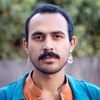
2017, Raise your legs in a scissor position 36 x 44" Inkjet print on cotton fabric, printed polyester, fake roses, dry flowers and embroidery. Hand stitched
I work within a wide variety of media: photography, archive, video and performance to name a few but my primary inspiration draws from conflict. Identity conflict, border conflict and in this case conflict in terms of sexuality. Body image specifically related to masculinity is fascinating. It is a shifting concept, dictated both by the men that hold these bodies and the societies around them: the body as nation or as attached to nationalism, the body as landscape, as conquerable and malleable. How then does that very idea of body image functions within so-called ‘gay’ and ‘straight’ spaces and how thin is the veil between?
I grew up in Karachi, Pakistan learning a very specific kind of masculinity, one that relied on strength, dependability and ‘hardness’ with ‘softness’ being a sign of weakness, of being less than manly. I was always pointed towards the television with images of hunks such as Rambo, the Terminator and the dapper James Bond. The aspiration for manliness and fitness very much came from Western ideals.
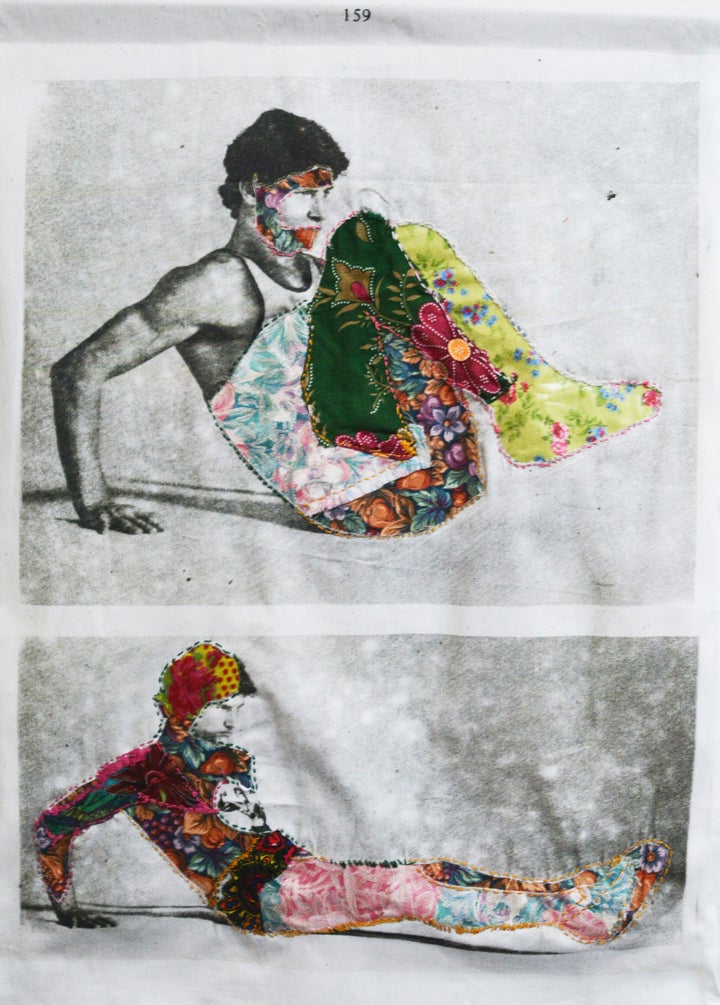
2017, Reclining 25 x 35" Inkjet print on cotton fabric, printed polyester and embroidery. Hand stitched
On the other side of the spectrum were the transgenders or hijras of Pakistan that I saw on an almost daily basis who had a wildly different interpretation of gender. They were not men and some identified as women where as others saw themselves as somewhere in the middle. There was also a very acceptable tradition of men showing affection to one another, holding hands, resting on each other and so on.
When I was fifteen years old I began to go to the gym in order to fulfill the manliness expected of me. I was too soft, too sensitive. I saw very manly men being very affectionate with one another, flexing, peacocking, touching and teasing. I was curious as to whether this led to anything else? Over the years as well as through personal experience I saw that it often did. This outpouring of testosterone did occasionally pave a bright sweaty road to sex. Musclemen, figures of national strength of a country in which homosexuality was a punishable offense, were all having sex with each other. In my mind this was a coup, it overthrew a rigid system of strict conventions but somehow at the same time it reified it. How could this conflict be reasoned with?
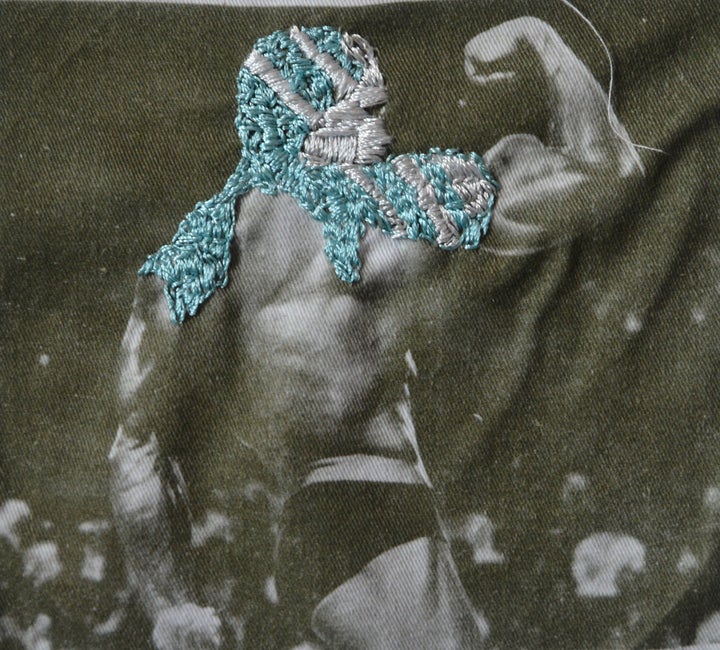
2016, Arnold and chainmail, 5 x 6", Inkjet print on cotton fabric and hand stitched embroidery
On a cold winter morning at a used book market in the Pakistani city of Lahore I found a translation of what appeared to be an Arnold Schwarzenegger exercise book. All the images within the series have been taken from a translation of a book supposedly originally written by Arnold Schwarzenegger, muscleman icon, actor and former governor of California. There is no true original English version as the book is a pirated mishmash of various books authored, co-authored, edited and or approved by the brand that is Arnold. This kaleidoscope of exercise manuals, alongside the Urdu translation and accompanying images of what appear to be white or white passing men projects this book into a world of its own creation, existing neither completely in the ‘East’ or in the ‘West’. It occupies a liminal space.
I began to think how best could I continue to further this in between-ness to feminize an otherwise ultra-masculine conversation. I scanned and printed these pages onto cotton fabric, blown up several times the size of the original; I then intervene replacing hard muscle with soft flowery fabric and brightly colored embroidery thread, utilizing feminine practice to reveal the softness behind the muscle. The result is a Frankenstein effect. Like the space the book created, I too create my own version of masculinity, making new men out of old ones and toppling the very serious and robust pride behind body building and inserting elements of humor and playfulness.

2016, Best Body Builder in the World, Inkjet print on cotton fabric, printed polyester and embroidery. Hand stitched. 36 x 44"
The precursor to this was my curiosity in male only spaces in Pakistan. Pakistan is a country with strict rules regarding the separation of men and women within almost all religious and cultural communities. Aside from a few exceptions in Pakistan’s larger more Westernized cities almost all spaces are segregated: gyms, buses, weddings, cafes, places of worships, with restaurants, parks and cinemas reserved only for families. I began to actively investigate spaces reserved exclusively for men in Pakistan documenting the country’s wrestling cultures, the nuances, the relationships, the moments of tenderness and camaraderie.
Initially I was far more interested in photography, documenting spaces in which masculinity was most actively performed in Pakistan, the wrestling pitch was perhaps the best place to go. The country has numerous traditions of wrestling, perhaps the most famous being the Punjabi variety of Kushti, which although I had documented I was more intrigued was Malakhra from my own province in Southern Pakistan: Sindh. I was far more interested in the moments of pause that froze otherwise violent actions and captured the calm in between the storms. It elaborates more on sensations of touch and intimacy, highlighting the love between these men who are otherwise trained to perform for a hyper masculine society.
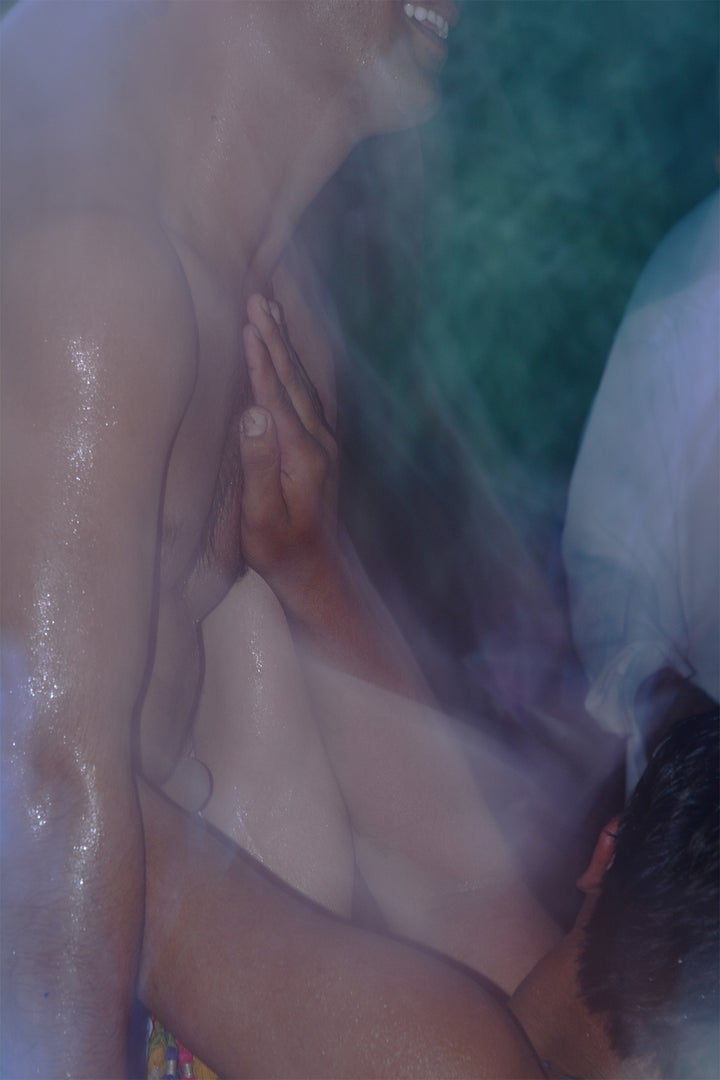
Malakhra
Given the profound nature of textile, its ability to story tell and to build, as an artist I feel a need to lend both respect and a necessary gratitude to the medium and to the history of this feminine craft. There is a certain power and subversive-ness to how threads can build new stories and narratives. Similarly photography can highlight the moments we miss with our naked eye, the tender moments we would otherwise let slip.
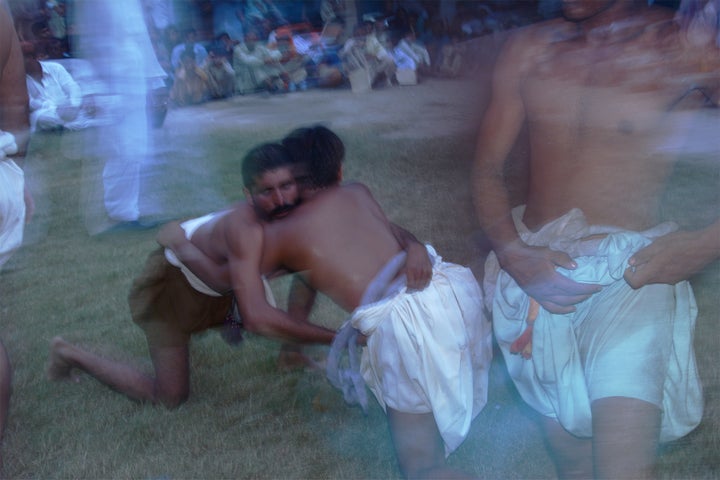
Malakhra
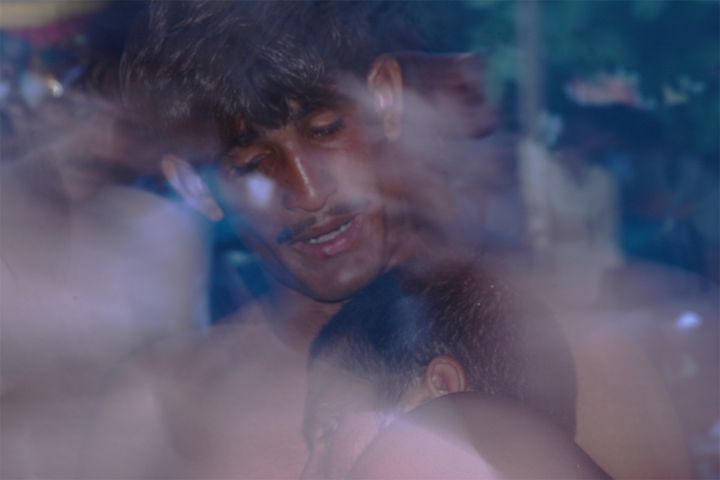
Malakhra
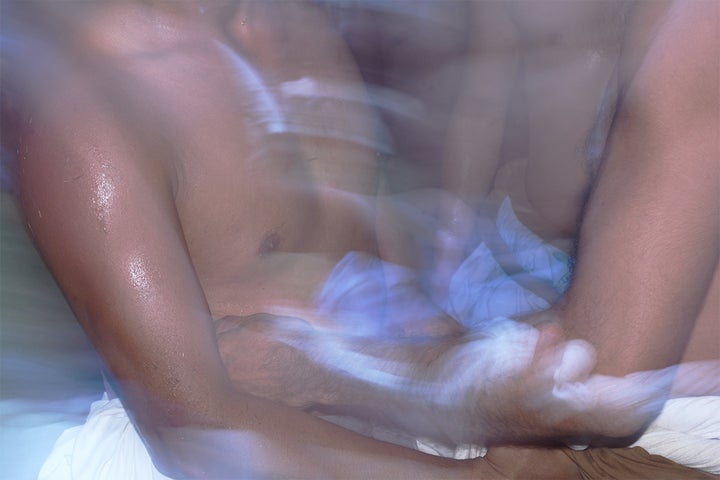
Malakhra
